Old Ladoga: The way of the Vikings
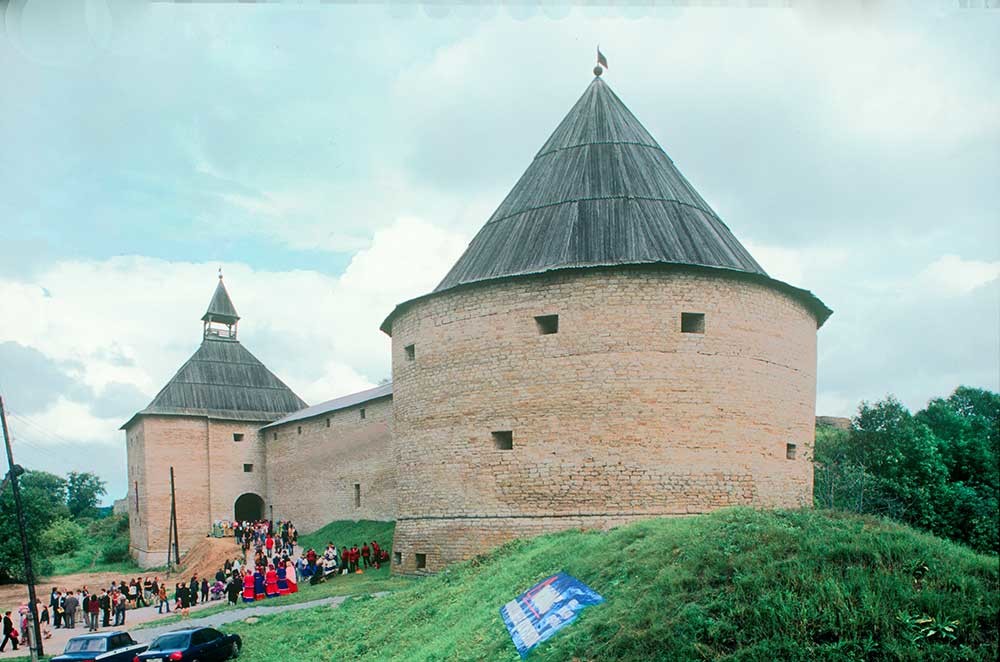
Staraya Ladoga Fortress. West wall with Vorotnaya Tower (left) & Clement Tower. Restored in 1976. August 16, 2003.
William BrumfieldAt the beginning of the 20th
In June and July of
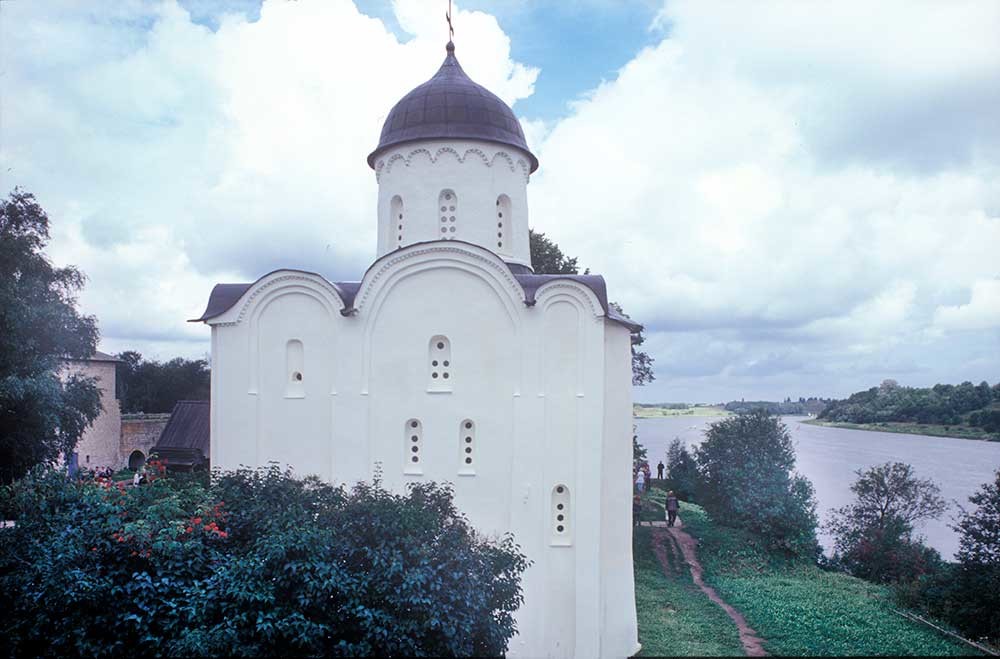
Staraya Ladoga Fortress. Church of St. George, south facade. View north with Volkhov River & Vorotnaya Tower (far left). August 16, 2003.
William Brumfield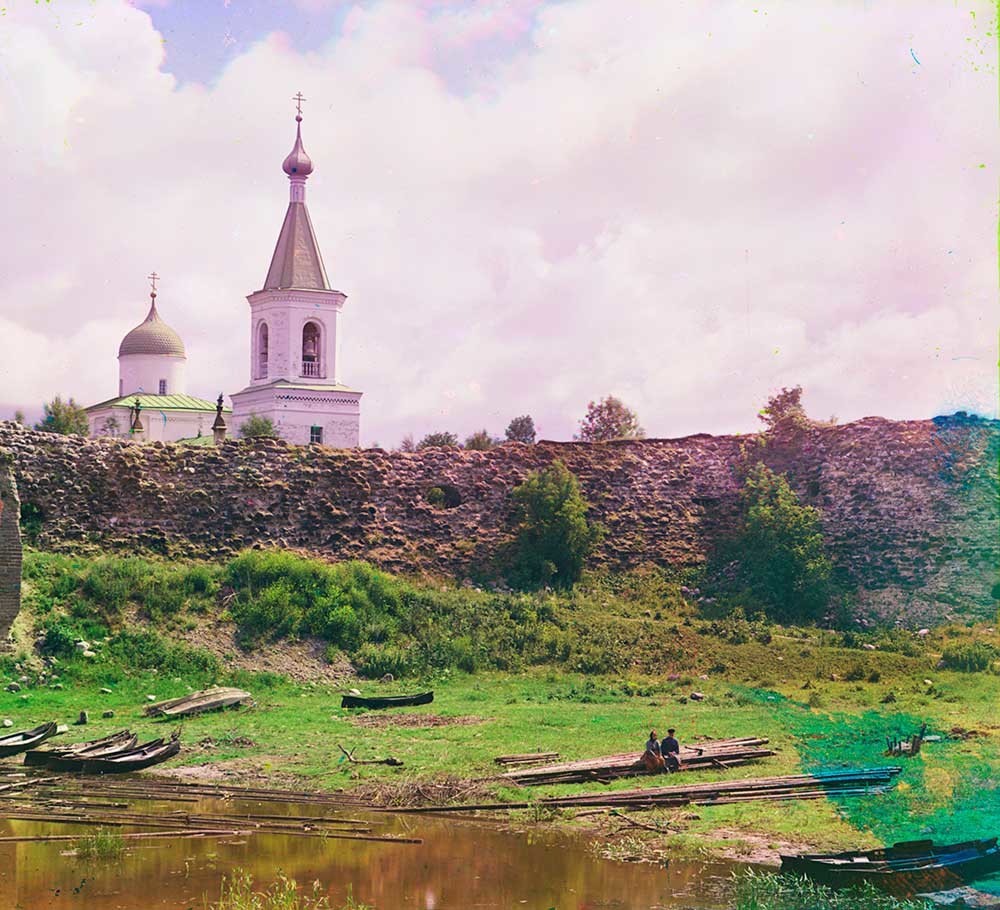
Staraya Ladoga Fortress. West wall with Church of St. George & bell tower (demolished). Foreground: Ladozhka (Elena) River. Summer 1909.
Sergei Prokudin-GorskyThe early Ladoga fortress had earthen ramparts and has been dated to the 9th century. Medieval chronicles link it to the semi-legendary Varangian leader Riurik, who with his two brothers Sineus and Truvor assumed control over the vast territory of ancient Rus in the 860s. At this time the Ladoga area was settled by a mixture of Slavs and Finnic peoples, but there was also apparently a Norse presence
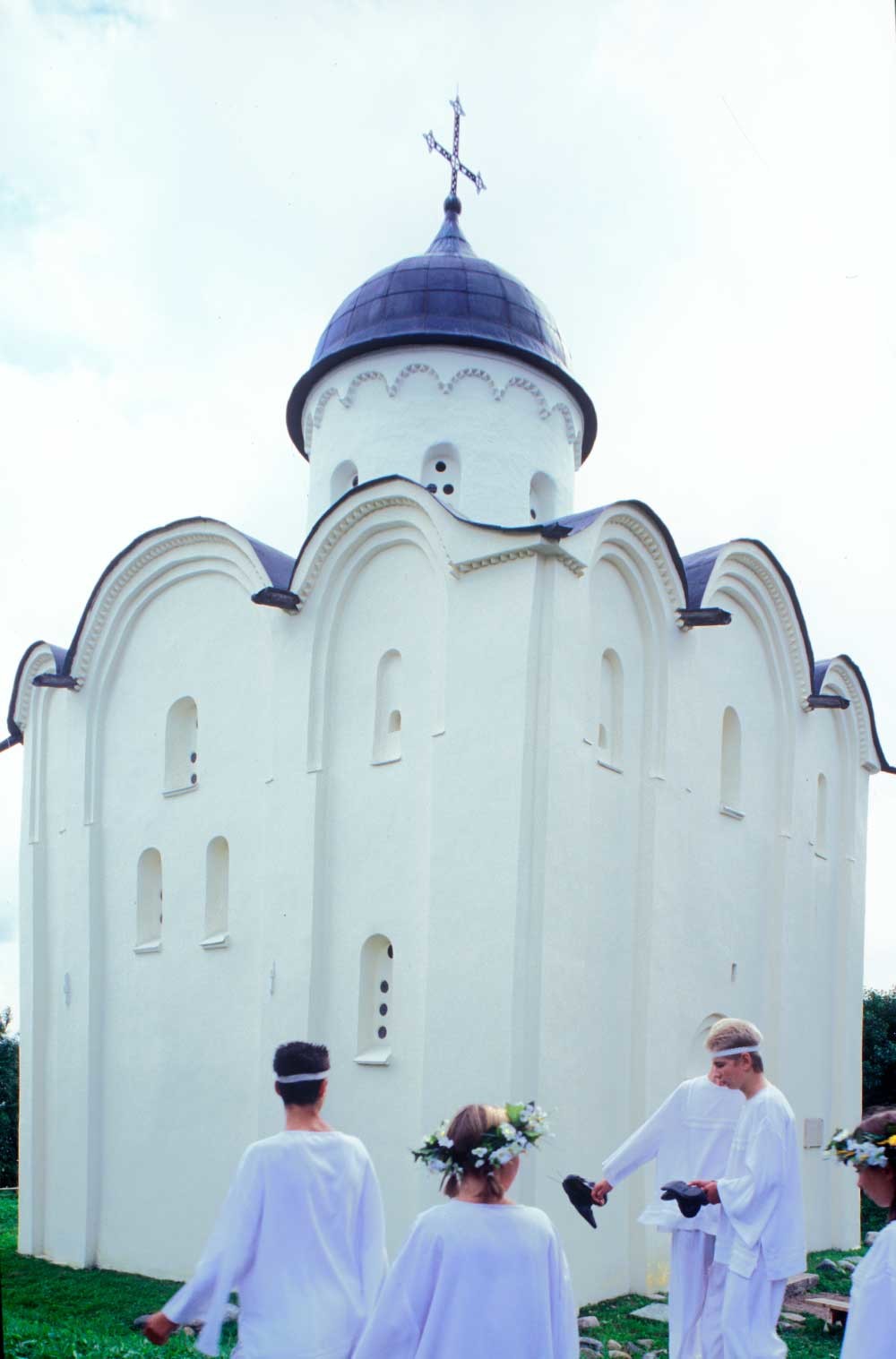
Church of St. George, northwest view taken during annual town festival. August 16, 2003.
William BrumfieldIn the mid 860s the center of Riurik’s power moved to Veliky Novgorod, and after his death around 879, his kinsman, Prince Oleg, shifted the power center southward to Kiev on the Dnieper River. Nonetheless, chronicle accounts maintain Riurik’s early presence in Ladoga in 862. This seems logical in view of the important role of Lake Ladoga and the Volkhov River in the trading route “from the Varangians to the Greeks”.
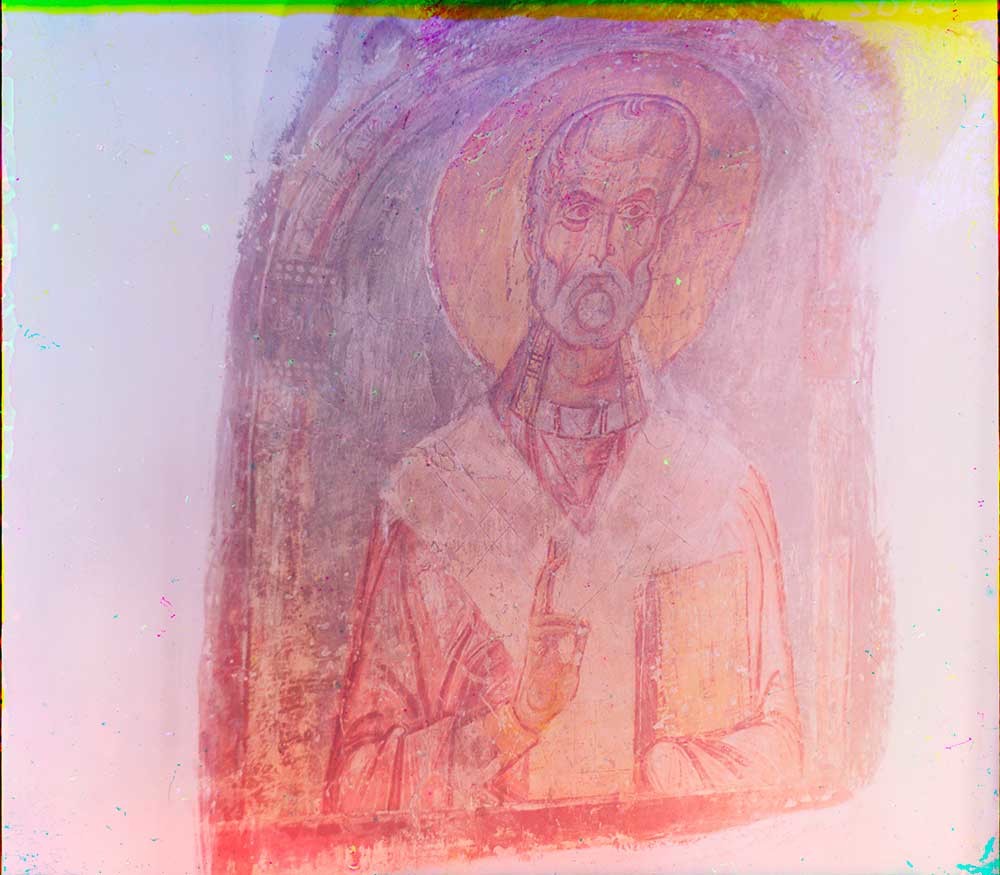
Church of St. George, interior. Late 12th-century fresco of St. Nicholas. Summer 1909.
Sergei Prokudin-GorskyDespite the power shift to the south, the continued importance of Ladoga is reflected in the imposing stone walls that replaced the earthen fortress in the early 12th century. Begun by Novgorod Prince Mstislav the Great, this remarkable fortification guarded the area south of Lake Ladoga from Swedish
The oldest shrine photographed by Prokudin-Gorsky in Ladoga was the Church of St. George, seen in his photograph over a section of the ruined fortress walls. There is no evidence that he photographed the church more closely. The constricted space inside the fortress and the ruined state of the fortress walls apparently excluded the distance that his limited camera lens would have needed to encompass the entire structure. I had the advantage of a reconstructed fortress wall and was able to photograph it with different lenses
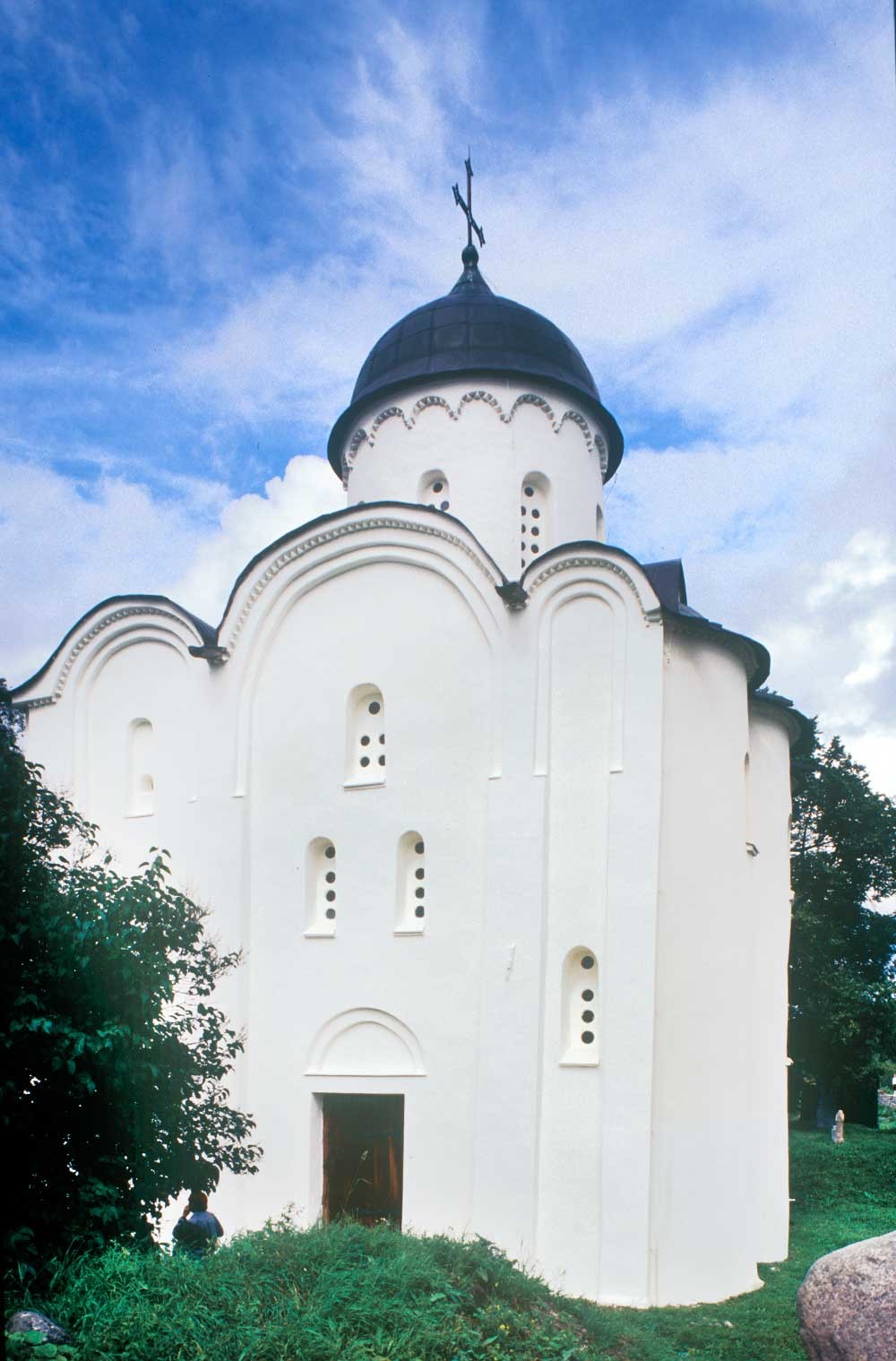
Church of St. George, south view with apse (right). August 16, 2003.
William BrumfieldThe initiator of the Church of St. George is thought to be Bishop Nifont, a prelate of Greek origins who was responsible for the exquisite Cathedral of the Transfiguration of the Savior at the Transfiguration Monastery in Pskov, which was known as Novgorod’s “younger brother”.
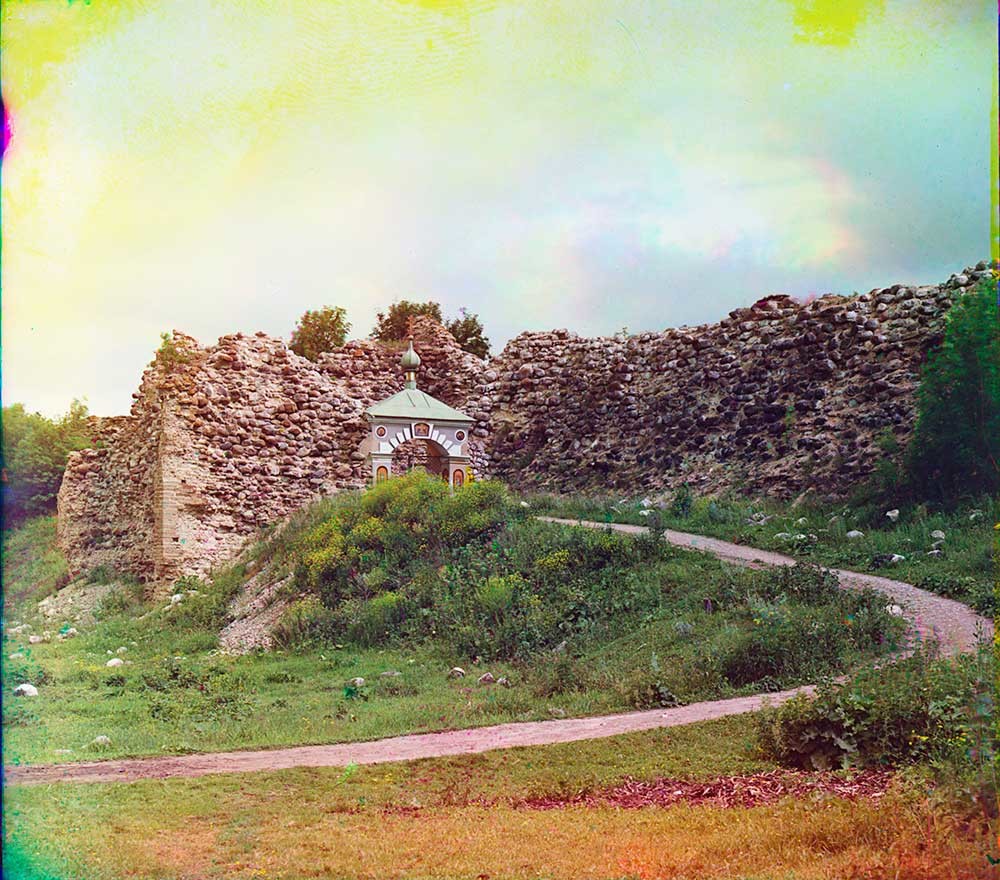
Staraya Ladoga Fortress. Ruins of west wall and Vorotnaya Tower (left). Summer 1909.
Sergei Prokudin-GorskyThe St. George Church conforms to a basic form common in pre-Mongol Novgorodian Rus: a simple whitewashed structure of thin brick, with each façade divided into three bays. An apse, containing the altar, extended from the east side, and the structure was crowned by a single dome
The ancient church was restored in various phases during the 20th century, including the 1920s and 1950s. During that period the 19th-century bell tower visible in Prokudin-Gorsky’s photograph was demolished as anachronistic
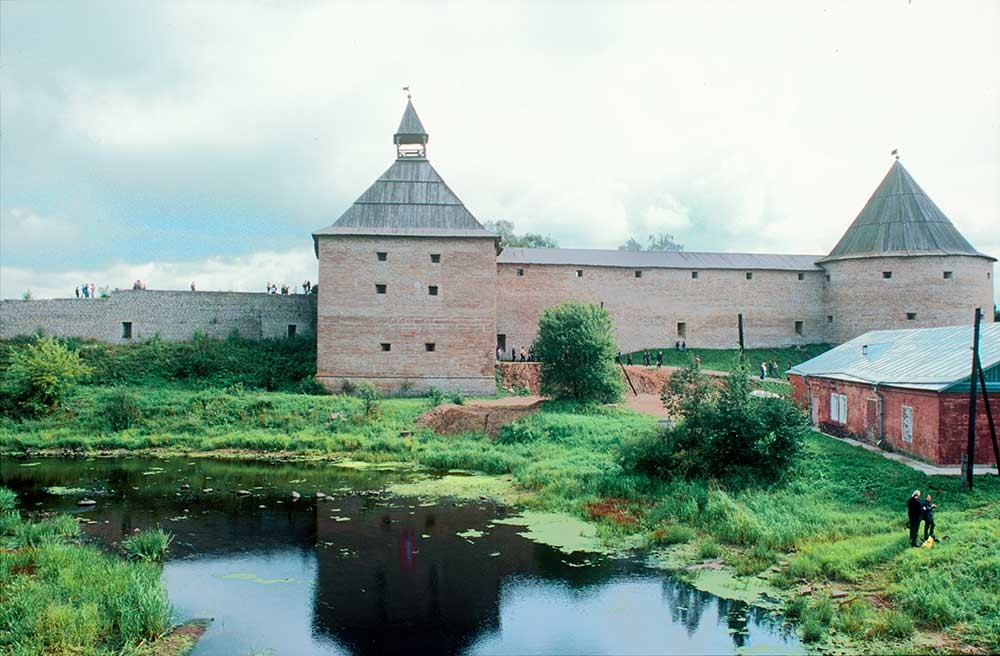
Staraya Ladoga Fortress. West wall with Vorotnaya Tower (left) & Clement Tower. Foreground: Ladozhka River. August 16, 2003.
William BrumfieldIn subsequent centuries Ladoga remained a significant Russian outpost in the northwest. Its walls were expanded with massive towers by Grand Prince Ivan the Great of Moscow at the end of the 15th century. Captured by the Swedish commander Jacob De la Gardie in 1610 during the Time of Troubles, Ladoga was retaken by Ivan Saltykov the following
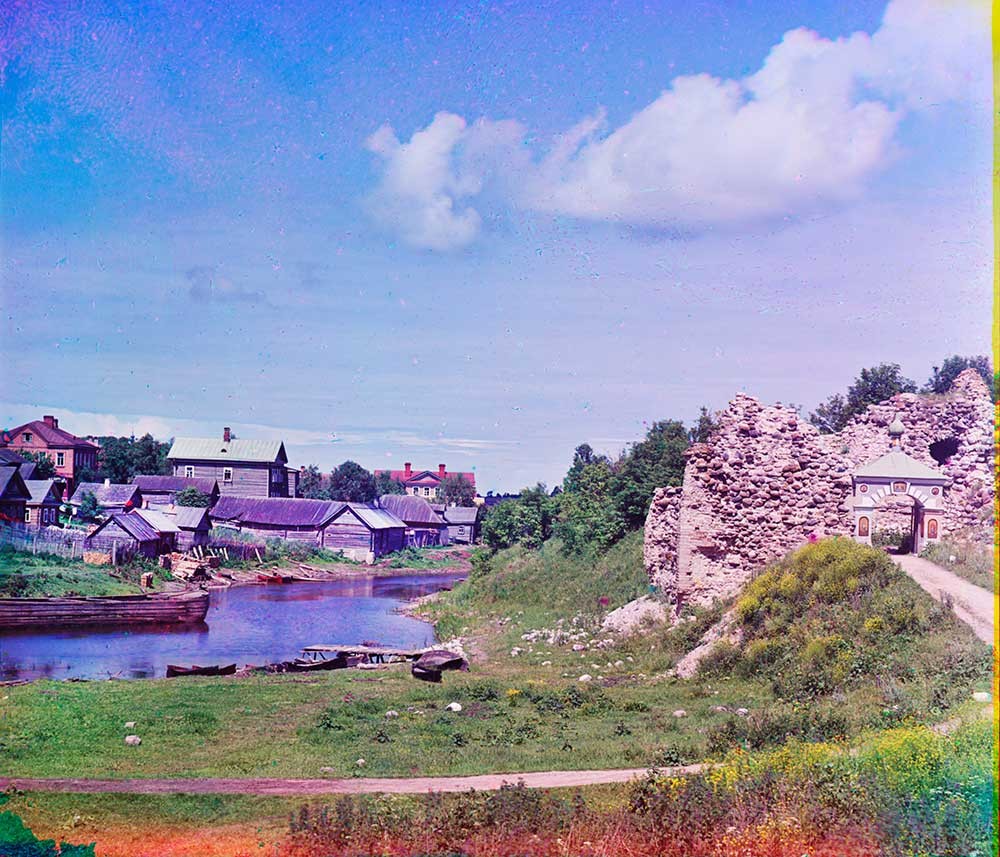
Staraya Ladoga village with Ladozhka River & ruins of Vorotnaya Tower. Summer 1909.
Sergei Prokudin-GorskyBy the time of Prokudin-Gorsky’s visit, the massive stone walls had fallen into a state of picturesque disrepair. He took four photographs of the fortress remains, primarily from the Ladozhka River
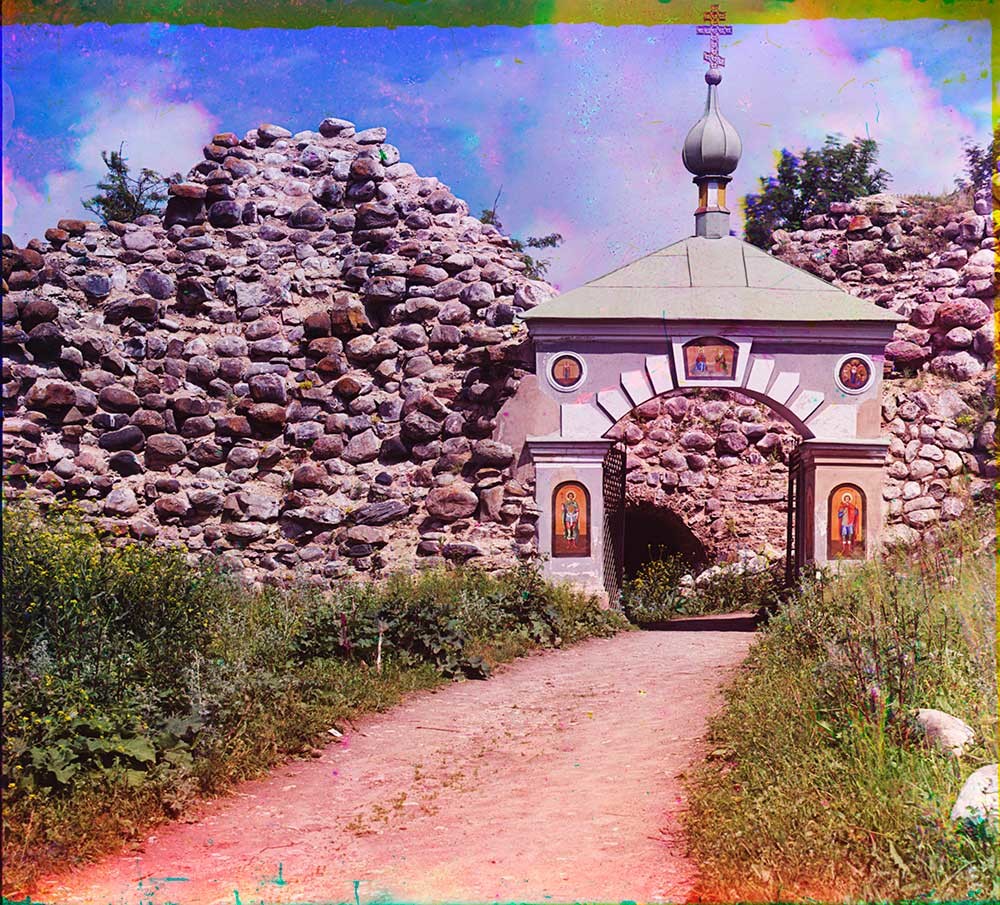
Staraya Ladoga Fortress. Gateway with ruins of Vorotnaya Tower. Summer 1909.
Sergei Prokudin-GorskyProlonged restoration work on the fortress walls began in 1960, and by 1976 portions of the walls and two large towers—the Vorotnaya and the Clement - had been rebuilt.
Even in its abandoned state (or perhaps especially in that state), Staraya Ladoga has inspired generations of artists, including Valentin Serov, Boris Kustodiev and, above all, Nicholas Roerich, whose paintings colorfully recreated visions of Viking boats in the area. On a windswept summer day, the view from the Old Ladoga fortress down the Volkhov River continues to summon such reveries
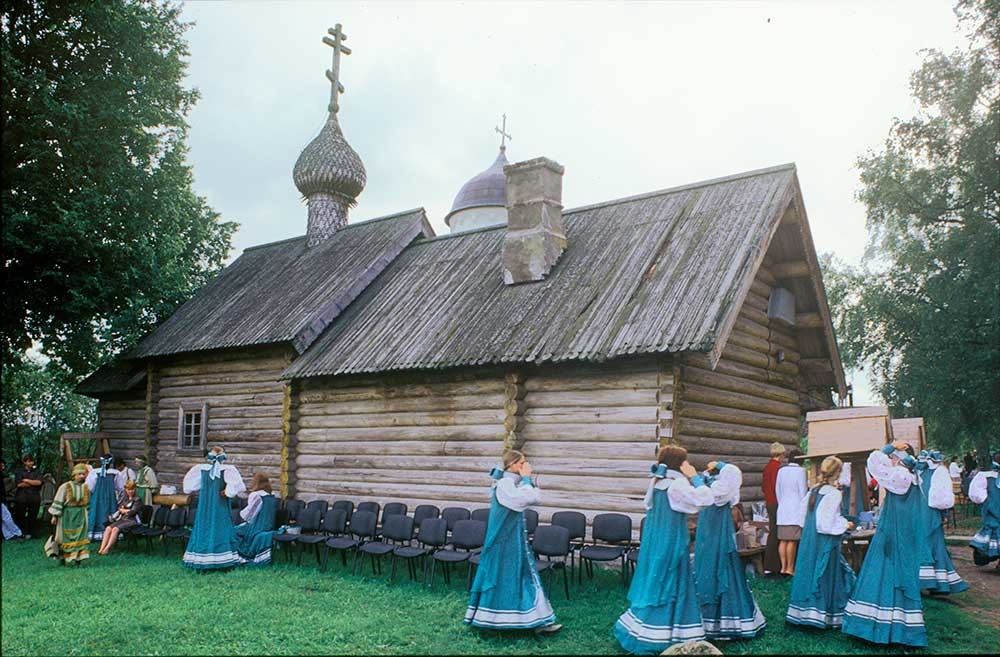
Wooden Church of St. Demetrius of Thessaloniki. Built as parish church in 1731. Restored in 1901 & at beginning of this century. August 16, 2003.
William BrumfieldIf using any of Russia Beyond's content, partly or in full, always provide an active hyperlink to the original material.
Subscribe
to our newsletter!
Get the week's best stories straight to your inbox